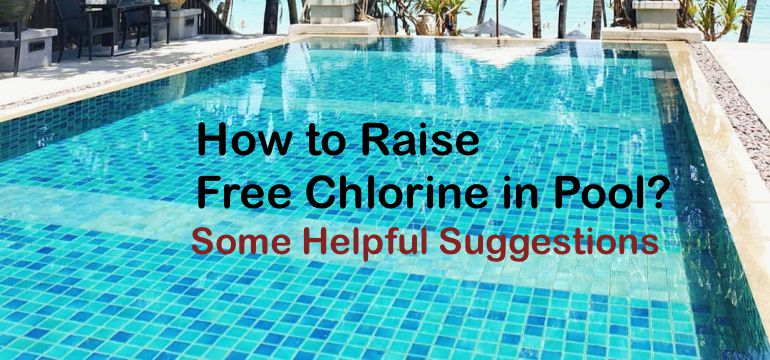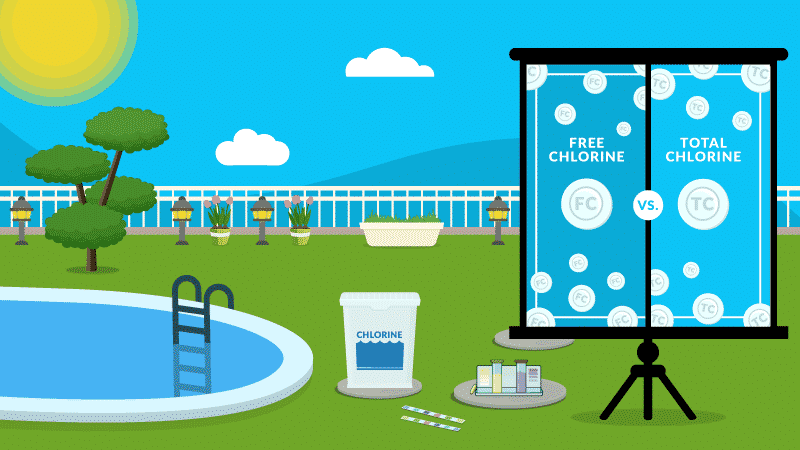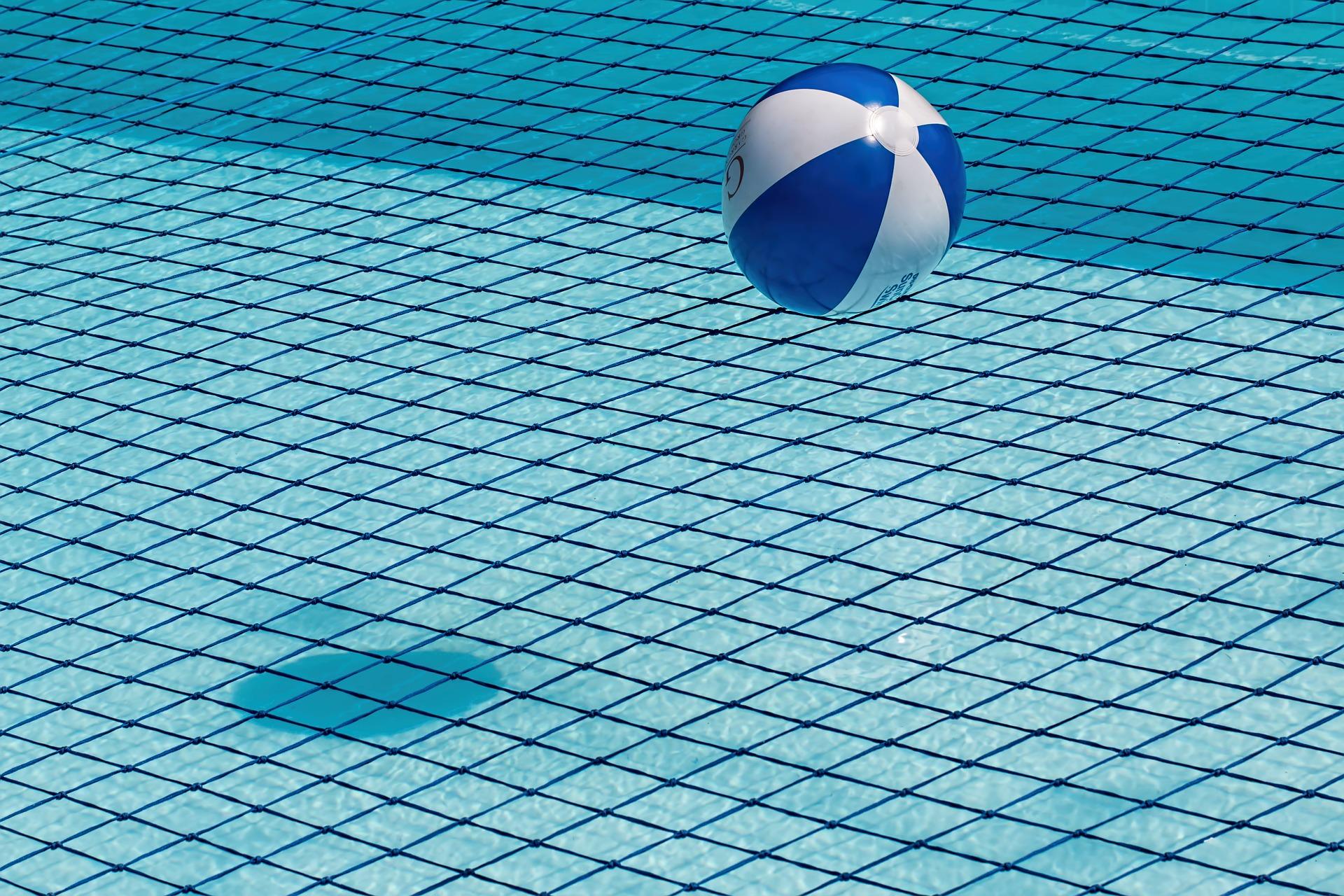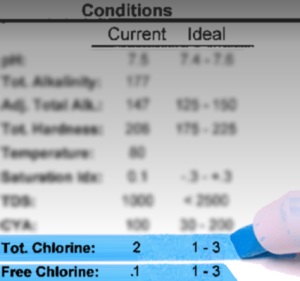free chlorine lower than total chlorine
You already know that free chlorine works well to kill bacteria germs and bugs. What action do you take if total chlorine is higher than free chlorine.

How To Reduce Pool Or Spa Chlorine Levels Intheswim Pool Blog
Free Chlorine Free chlorine refers to the amount of chlorine that has yet to combine with chlorinated water to effectively sanitize contaminants which means that this chlorine is free to get rid of harmful microorganisms in the water of your swimming pool.

. Testing the amount of total chlorine is important to keep the balance of chlorine in the water. In general the free chlorine level should remain between 15 and 25 parts per million. The key difference between free chlorine and total chlorine is that the free chlorine is the amount of chlorine that can inactivate pathogenic microorganisms present in the water whereas total chlorine is the sum of combined chlorine and free chlorine.
You must reach Breakpoint Chlorination which is the addition of chlorine to your pool equivalent to the Combined Chlorine level times 10exampleTotal Chlorine 15ppmFree Chlorine 10ppmSo. But a safe range is between 1 and 3 ppm. 435 8297 Views.
Why do you want to measure free chlorine as opposed to total chlorine. Combined Chlorine and Total Chlorine. The Pool and Hot Tub Alliance recommends keeping free chlorine levels between 20 and 40 parts per million ppm.
Samples with pH of 76 or above may have 250 ppm alkalinity or above. For example if your free chlorine FAC levels and total chlorine TC levels are the same then theres no combined or used chlorine in your water and theres no need to add any chemicals today. At most the number can be the same meaning no girls.
Never let the chlorine dip below this level. Total chlorine is the sum of free chlorine and combined chlorine. 45 Votes If your total chlorine level is high you will use a non-chlorine shock.
FAC CAC TC. What causes low free chlorine in pool. If total chlorine is higher than free chlorine there are contaminants in the pool.
The SWS Program methodology leads to free chlorine levels that are significantly lower than the WHO guideline value for free chlorine in drinking water which is 05 mgL value. The value of the free chlorine is always a lower than the value of the total chlorine. Ideally combine chlorine must be less than 02 parts per million ppm while the free one is between 2.
When ammonia or organic nitrogen is also present chloramines known as monochloramine dichloramine and trichloramine will quickly form. Total chlorine residual is the total amount of free and combined chlorine existing in water. Combined chlorine residual is the chlorine that exists in water in chemical combination with ammonia or other organic nitrogen compounds.
Total Chlorine is the combination of free and combined chlorine that is in your pool. Ideal range 20 to 40 ppm safe range 10 to 60 ppm. If the total chlorine level is higher than the free chlorine level the difference of the two is the combined chlorine level.
Therefore it is good to deal with combined chlorine while it is still small. The only way that test result is valid is if your Combined Chlorine is -81. These are the good parts of chlorine that are active and able to change chemically to sanitize your pool.
Free chlorine measurements are higher than total chlorine. In other words none of the chlorine has been utilized yet. Its because free chlorine is 25 times more effective at sanitizing pool water than used up combined chlorine is.
There are many occurrences that cause. Greater chlorine levels than 3 ppm will continue to kill contaminants but will be an eye and skin irritant. You cant put 10.
Free Chlorine FC Combined Chlorine CC Total Chlorine TC If the free and total chlorine levels are identical that means there isnt a presence of combined chlorine in your swimming pool. This is why its so important to test your pool water regularly. Chlorine levels lower than 1 ppm place swimmers at grave risk of contamination.
On the other hand if the free chlorine level is lower than the total chlorine level you can calculate the combined chlorine. Here the difference between those two types indicates your pool water has combined chlorine. Should be equal to free chlorine most of the.
Free chlorine is the most important type of chlorine to monitor because it is responsible for actively sanitizing your pool. In order for your pool to be properly sanitized the free chlorine level must remain higher than the combined chlorine level. Sometimes you find the free chlorine level becomes lower and the total chlorine level increases.
Your free chlorine level should ideally be 3 parts per million. This ensures that your pool will be sanitized and optimum for use without the irritating effects of too much chlorine. Chloramines are also known as combined chlorine.
I am a little confused. Combined chlorine levels should not be above 05 parts per million and swimmers are likely to be more comfortable if the level is below 02 parts per million. Free chlorine residual is unreacted hypochlorous acid and hypochlorite ion.
Free chlorine reacts with ammonium ions and organic compounds to form chlorine compounds. If free chlorine measurements are higher than total chlorine using a DPD method check the alkalinity and pH of the sample. Free chlorine combined chlorine and total chlorine can be easily understood with the following equation.
Total Chlorine is the measure of free and combined chlorine therefore the free chlorine cannot be higher than the Total Chlorine. For most pools the chlorine level should remain between 1 to 3 ppm. Ideally less than 02 ppm safe below 05 ppm.
The level of total chlorine should always be greater than or equal to the level of free chlorine. When adding the DPD reagent a pH of 63 should be observed. As a rule you will need to raise free chlorine to 10 times your combined chlorine to hit what is known as break point.
The SWS Program recommends testing free chlorine in homes of SWS users for evaluation of whether or not users are using the system and if they are using it correctly. If it is low you will use a chlorinated shock. What happens if free chlorine is low.
The level of combined chlorine must always be lower than the free one. Free chlorine combined chlorine and total chlorine can be easily understood with the following equation. The formula of chlorine is free chlorine combined chlorine total chlorine.
Free Chlorine Combined Chlorine Total Chlorine. In effect free chlorine is the amount of chlorine that is free to kill harmful microorganisms in your swimming pools water. When your free chlorine levels get too low especially below 1 ppm microorganisms start to multiply faster because theres nothing there to fight it.
And so it is with chlorine. The optimum level of Free Chlorine in your pool water is between 2 to 4 parts per million. Additionally nuisances like algae start to bloom and spread quickly.

Difference Between Free Chlorine And Total Chlorine Compare The Difference Between Similar Terms

A How To Guide 7 Tips To Lower Chlorine Levels In Your Pool

Free Vs Combined Vs Total Chlorine What S The Difference Atlas Scientific

Free Vs Combined Vs Total Chlorine What S The Difference Atlas Scientific

Raise Or Lower Levels Of Pool Chlorine The Pool Factory

How Do I Correct Bad Chlorine Or Ph Balance Aquatech Utah

The Difference Between Total And Free Chlorine

A How To Guide 7 Tips To Lower Chlorine Levels In Your Pool

How To Raise Free Chlorine In Pool Some Helpful Suggestions

A How To Guide 7 Tips To Lower Chlorine Levels In Your Pool

The Difference Between Total And Free Chlorine

Difference Between Free Chlorine And Total Chlorine Compare The Difference Between Similar Terms

Free Chlorine Vs Total Chlorine What S The Difference Sensorex

I Can T Keep A Free Chlorine Level In My Pool Youtube

Maintaining Swimming Pool Chlorine

Free Chlorine Vs Total Chlorine Forbes Advisor
The Difference Between Total And Free Chlorine

